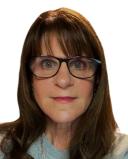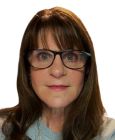Identity
Donor-Conceived People: The Search for Ancestry and Identity
Discovering family history enhances self-understanding and connection.
Updated August 19, 2024 Reviewed by Michelle Quirk
Key points
- Exploring ancestry helps donor-conceived people get insights into traits and develop a stronger sense of self.
- Researching family history can enhance emotional well-being and help with identity formation.
- Understanding genetic risks and family medical history can help offspring make more informed health decisions.
In many cultures, honoring ancestors is a cornerstone of identity and community. The stories of those who came before us help to shape our understanding of self and our place in the world. For donor-conceived people (DCP), the quest to learn about their ancestry holds particular significance. Denied access to a comprehensive family history, they often embark on a profound journey of discovery to piece together their origins and make sense of their identity.
Donor information
Unlike individuals with a traditional family structure who know both of their biological parents, DCP typically receive limited information about their unknown biological parents. When men and women sell their gametes, the sperm bank or clinic asks them to fill out a “donor profile.” This is the nonidentifying information packet that parents use to choose a donor, and quite often it is the only information that DCP are given about one-half of their ancestry and medical family history. This includes a self-reported medical form, which includes limited family information and a snapshot of one day in the life of a healthy young donor. Information about ancestry is limited to the country/countries of origin that the donor lists. For example, English/Irish, Ashkenazi Jewish, Kenyan, or East Indies/Spanish/Norwegian. These donor profiles are often the sole source of information and provide scant details about ancestry beyond general ethnicities. This leaves a significant gap in understanding their heritage and the experiences that shaped their genetic makeup.
Research
A 2010 published study of DCP reported that of those searching for the donor, 79 percent listed “To have a better understanding of my ancestral history and family background” as a main reason for searching. Seventy-nine percent also chose, “To have a better understanding of my genetic make-up” as a top reason.1 In a 2021 study of 523 donor offspring, 26 percent reported searching for the donor because they wanted "to feel complete as a person."2 In that same study, more than 37 percent answered "yes" to the question, "Have you had any medical or psychological complications that have been more difficult as a result of not knowing your entire medical history".
Identity, connection, belonging.
The desire to connect with one's ancestry stems from a fundamental human need for belonging.
- Sense of identity: Understanding one's ancestry can provide profound insights into traits, talents, behaviors, and tendencies. Stories about ancestors' lives, choices, and experiences offer clues as to why certain characteristics or attributes are present. For instance, discovering that an ancestor was a musician might explain a donor-conceived individual’s innate musical talent or interest. This knowledge can help DCP understand who they are and offer insight into why they are that way. It can illuminate reasons behind certain fears, strengths, or physical and mental attributes, fostering a deeper connection with their own identity. Understanding where and who you come from by learning about the cultures, traditions, and experiences that have shaped your family lineage can help develop a stronger sense of self.
- Family connection: Collaborative exploration of shared ancestry and family history can be an enriching bonding experience, especially for donor-conceived individuals who have found half-siblings. Discovering and piecing together family stories and genealogical data can forge a sense of kinship and belonging, and strengthen these new relationships. When siblings connect over their shared heritage, it can help to bridge gaps created by their initial separation and foster a sense of unity and commonality.
- Self-esteem/resilience: Learning about ancestors who overcame adversity or achieved notable accomplishments can serve as a source of pride and inspiration. For DCP, finding stories of perseverance or success within their family history can bolster their self-esteem and resilience. Knowing that their lineage includes individuals who faced and overcame challenges can provide reassurance and motivation. These narratives of triumph in the face of hardship can be empowering, showing DCP that they, too, have the strength to navigate their struggles.
- Health awareness: Understanding one's family history is crucial for identifying potential genetic risks for certain diseases. This awareness allows individuals to make informed decisions about their health and wellness, including preventive measures and screenings. For donor-conceived people, knowledge of genetic conditions that may run in their biological family can be lifesaving, lead to early diagnosis and treatment of hereditary conditions, and help them understand and manage mental health issues such as depression, anxiety, or addiction. Recognizing that these challenges may be part of a broader genetic pattern can also help donor-conceived people come to terms with their experiences and seek appropriate support and treatment.
- Sense of belonging: Connecting with one's ancestry can provide a sense of belonging to a larger family narrative. For donor-conceived people, this connection can be crucial for mental well-being. Knowing about one's ancestors and their experiences can instill a feeling of being part of something bigger than oneself. This sense of belonging can be integral to psychological health and can offer comfort and grounding.
- Cultivate a sense of place: Exploring ancestral roots helps DCP develop a grounding sense of place within a larger historical and cultural context. Understanding the migrations, struggles, and achievements of one's ancestors contributes to a richer sense of personal and familial identity. This can also foster a stronger connection to specific cultural traditions and practices, providing a deeper appreciation of one’s heritage.
- A greater understanding of the world: By learning about your ancestors' experiences, you can gain a deeper and broader perspective of history and social issues, and a connection to both. You can see how your family fits into the larger narrative of the past.
An emotional journey
The journey of uncovering one's ancestry can be emotionally charged. It can involve navigating some complex feelings. For DCP who are just learning that the parent who raised and loved them is not biologically related, there can be feelings of loss for the genetic lineage they no longer hold. The process of rebuilding a family history can be challenging and frustrating. It requires reconciling the limited information provided by donor profiles (some do not even have this information) and networking with relatives found via DNA testing companies and/or the Donor Sibling Registry who also have the desire for a more comprehensive family history. For many DCP, this journey is not just about finding answers but also about finding peace. It’s about making sense of their place in the world and their connection to a broader lineage.
A family narrative
Humans have a deep-seated need for roots, stability, and continuity. Donor-conceived people often feel this need acutely, driven by a desire to know all the places where they belong. The quest to learn about their ancestry is not merely about gathering information but about constructing a meaningful narrative that integrates their past, present, and future. This journey can offer significant insights into themselves, create connections with relatives, and make space for their place (and their children's) in an ongoing family story.
References
1. Vasanti Jadva, Tabitha Freeman, Wendy Kramer, and Susan Golombok. Experiences of offspring searching for and contacting their donor siblings and donor, Reproductive BioMedicine Online (2010) 20:523– 532.
2. Dana R. Siegel, Jeanelle Sheeder, Wendy Kramer, Cassandra Roeca. Are Donor-Conceived People Willing to Use Donors Themselves? Insights from Individuals Conceived via Donor-Assisted Reproduction. Human Reproduction, 2022:1–8, 2022. https://doi.org/10.1093/humrep/deac169
Published papers on donor-conceived people, donors, parents, and other donor family members.



